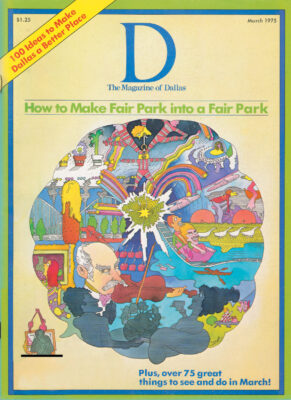Questions have arisen about various aspects of wine and wine drinking, and I have distilled a number of them into three basic inquiries. The answers, I believe, will provide a broad spectrum of information useful to the experienced oenophile as well as the amateur. And just so we haven’t prompted another question, an oenophile is one who is an expert in the study (and drinking) of wine.
What is the point -really -of that ritual so many diners perform when tasting a wine opened for them by a waiter?
I presume you refer to the business of sniffing the cork, and swirling the wine around in the glass, while peering knowingly at it and all that. Well, although it does look pretentious and somewhat artificial, as if done for effect on other diners, I have to defend the little spectacle. As a matter of fact, it’s absolutely essential in our endeavor to learn about wines and enlarge our palate’s memory.
You sniff the cork because it gives you the first warning in case the wine is spoiled. If the wine is in good condition the cork will smell of wine; if the cork smells of cork or mildew, the bottle is probably bad. More often than not it was incorrectly stored, standing straight up instead of on its side.
The next step is to judge and remember the color. The best way is to tilt your glass slightly against the white table cloth. Do not look at the color against a direct light -if you do the wine will reflect the colors of the wall, the chandelier on the ceiling, or other things. But the real color will be distorted.
Now to enjoy the aroma and the bouquet of the wine swirl it around in the glass just enough to coat the sides with a thin film. This thin film will evaporate much faster and release the smell sooner. Inhale a few times, and concentrate. An unpleasant smell is another warning of bad wine. It could smell musty because it’s too old. It could smell of vinegar. On the other hand, sound and healthy wine will have its own individual and pleasant smell. Penetrating, clean and easy to remember.
The next step is to take a sip. Just a small sip -don’t gulp it. Sort of chew on the wine as you judge its complicated flavor. As you taste it, concentrate. Then review the color – remind yourself of the aroma and the taste.
Altogether, you should form a mental picture of the whole wine and store it in the back of your mind for future reference. This is how we develop our palate’s memory.
Do I have to serve red wines with meat?
Well, the old adage that we must always serve red wine with red meat and white wine with white meat should be taken for just that… an old adage. It does have fact as its basis. But it’s not a hard and fast rule.
Of course, a very full-bodied, robust red wine needs, cries out for a beautifully prepared slice of roast beef. The two compliment each other perfectly. Wines, like spices, should be served with foods they compliment. A red wine would completely overpower the subtle flavor of fish.
The whole idea behind the combining of wine and food is for each to bring out new and hidden flavors in the other.
For example, take the dark meat of turkey. Is it red or white? Really, neither. So, for fun, try tasting a light red wine -a Beaujolais perhaps. They go beautifully together. Then again you might try drinking a fairly fruity German Moselle with it. It will bring out tastes you never knew turkey had.
So, in this case, either red or white would be proper to serve. For real fun serve them both during the same dinner. The white wine first, and the red wine in another glass, just for the sake of comparison. I’ll bet you have an evenly divided vote on who likes what.
There is one principle to remember: do what you like. But be sure it’s really what you like -not what you think you should pretend to like.
And don’t make the mistake of thinking whatever is most expensive is best. Teach your palate, use your own taste to experiment in combining things -and above all -let your individual taste be your guide.
My husband and I opened a bottle of rather high-priced imported Burgundy a few days ago, but over-estimated our thirst. So we finished only three-fourths of the bottle. I corked the rest carefully and saved it. Last night when I opened it again the wine tasted terrible. Completely different from the first night. What happened?
Well, I’m not surprised. The unfinished portion will taste differently the very next day, but can be safely used for another of the delights of wine -cooking and basting.
You see, all the so-called table wines that have only about 11 to 13 percent alcohol spoil 6 to 12 hours from the time the cork is extracted. Of course, I can’t imagine two people being unable to finish a bottle of wine with dinner. You must have enjoyed a few cocktails before, didn’t you?
But if a regular size bottle is too much, start buying smaller ones. All the better wine stores carry a good selection of small bottles called “halfs” or “tenths.” Please don’t call them splits. That’s a quarter of a bottle and much too small.
However, if you can’t find what you want, let me pass this suggestion on to you. Save a smaller bottle from a previous occasion. Wash it with boiling water and of course, don’t forget to sterilize the cork too. Dry it, chill it and then pour half the wine from the larger bottle into the smaller one.
Be sure you leave just enough room in the neck for the cork and no more. You’ll want to put the cork in immediately. Then you can store the bottle away for future use -but no longer than 3-4 months -and serve the remaining half of the larger bottle with that night’s dinner.
Another thing you can do with theunused portion of wine is to leave thebottle uncorked. In no time at all youwill have some very nice wine vinegar.
Related Articles

D Home Events
Scenes from the D Home Spring Issue Party 2024
The interiors community gathered at the Dallas Market Center on April 3 for the D Home Spring Issue Party.
By D Home

Arts & Entertainment
In Denton, New Life for an Old Theater
The entrepreneurs who brought the Texas Theatre back to life in Oak Cliff see a similar future for the Fine Arts in downtown Denton. So does its City Council.
By Austin Zook

Golf
A New Way to Golf
The game has exploded out of the buttoned-up confines of the country club to become more popular than ever—driven by North Texas’ courses, clubs, innovators, and influencers.


